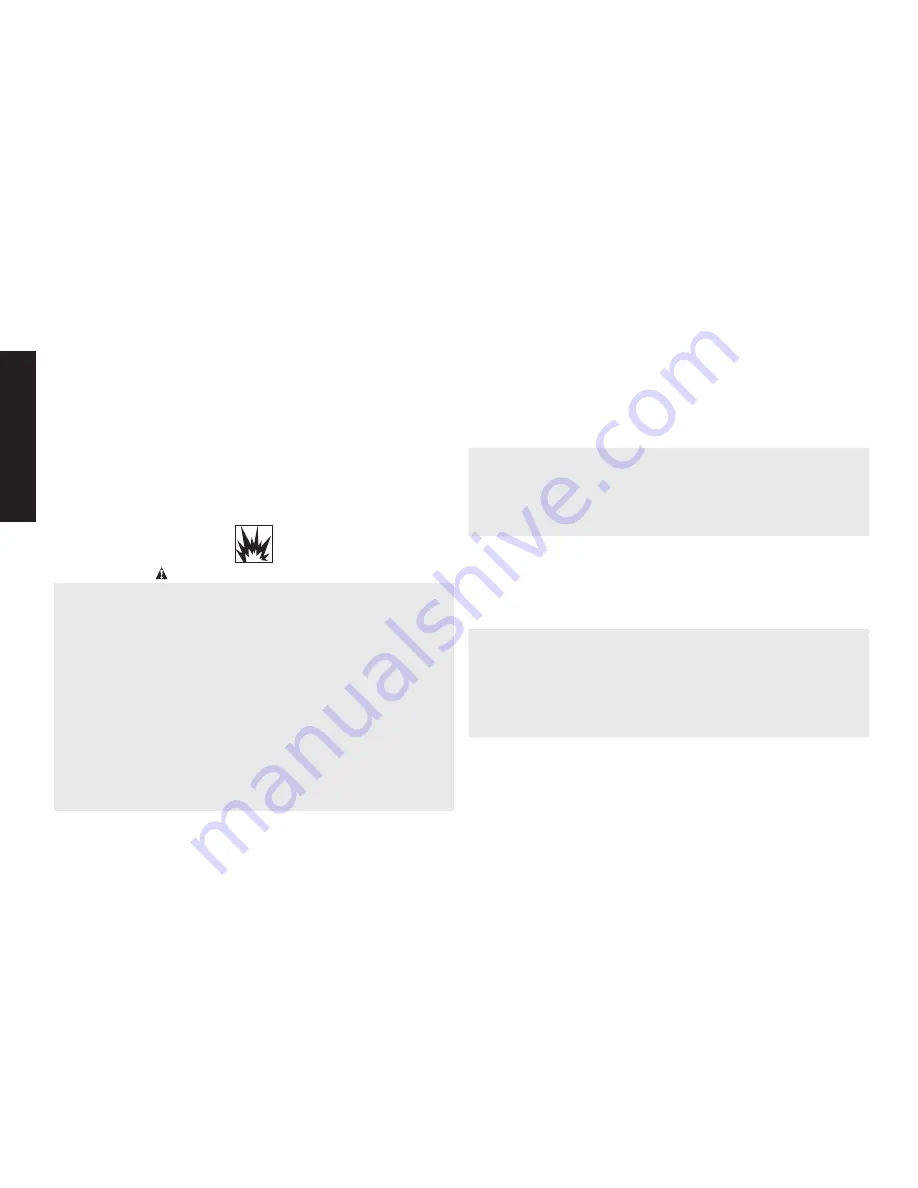
6
English
• Exposure to chemicals
in dust created by
power sanding, sawing,
grinding, drilling and other
construction activities may
be harmful.
• Sprayed materials such as
paint, paint solvents, paint
remover, insecticides, weed
killers, may contain harmful
vapors and poisons.
• Work in an area with good
cross ventilation. Read and
follow the safety instructions
provided on the label or
safety data sheets for the
materials you are spraying.
Always use certified safety
equipment: NIOSH/OSHA
respiratory protection or
properly fit ting face mask
designed for use with your
specific application.
DANGER: RISK OF BURSTING
Air Tank: On February 26, 2002, the U.S. Consumer Product Safety
Commission published Release # 02-108 concerning air compres
-
sor tank safety:
Air compressor receiver tanks do not have an infinite life. Tank life is
dependent upon several factors, some of which include operating
conditions, ambient conditions, proper installations, field modifica
-
tions, and the level of maintenance. The exact effect of these fac
-
tors on air receiver life is difficult to predict.
If proper maintenance procedures are not followed, internal corro
-
sion to the inner wall of the air receiver tank can cause the air tank
to unexpectedly rupture allowing pressurized air to suddenly and
forcefully escape, posing risk of injury to consumers.
Your compressor air tank must be removed from service by the end
of the year shown on your tank warning label.
The following conditions could lead to a weakening of the air tank,
and result in a violent air tank explosion:
WHAT CAN HAPPEN
HOW TO PREVENT IT
• Failure to properly drain
condensed water from air
tank, causing rust and thinning
of the steel air tank.
• Drain air tank daily or after each
use. If air tank develops a leak,
replace it immediately with
a new air tank or replace the
entire compressor.
• Modifications or attempted
repairs to the air tank.
• Never drill into, weld or make
any modifications to the air
tank or its attachments. Never
attempt to repair a damaged or
leaking air tank. Replace with a
new air tank.
• Unauthorized modifications
to the unloader valve,
safety valve, or any other
components which control air
tank pressure.
• The air tank is designed
to withstand specific
operating pressures. Never
make adjustments or parts
substitutions to alter the factory
set operating pressures.
• Excessive vibration can
weaken the air tank and
cause rupture or explosion.
Excessive vibration will occur if
the compressor is not properly
mounted or if engine operates
above recommended RPM.
• Do not remove the stiffener bar
connecting the compressor
pump to the engine, except
to adjust belt tension. Then
securely tighten the stiffener
bar bolts. This bar controls unit
vibration.
Summary of Contents for DXCMH1393075
Page 99: ...NOTES ...







































